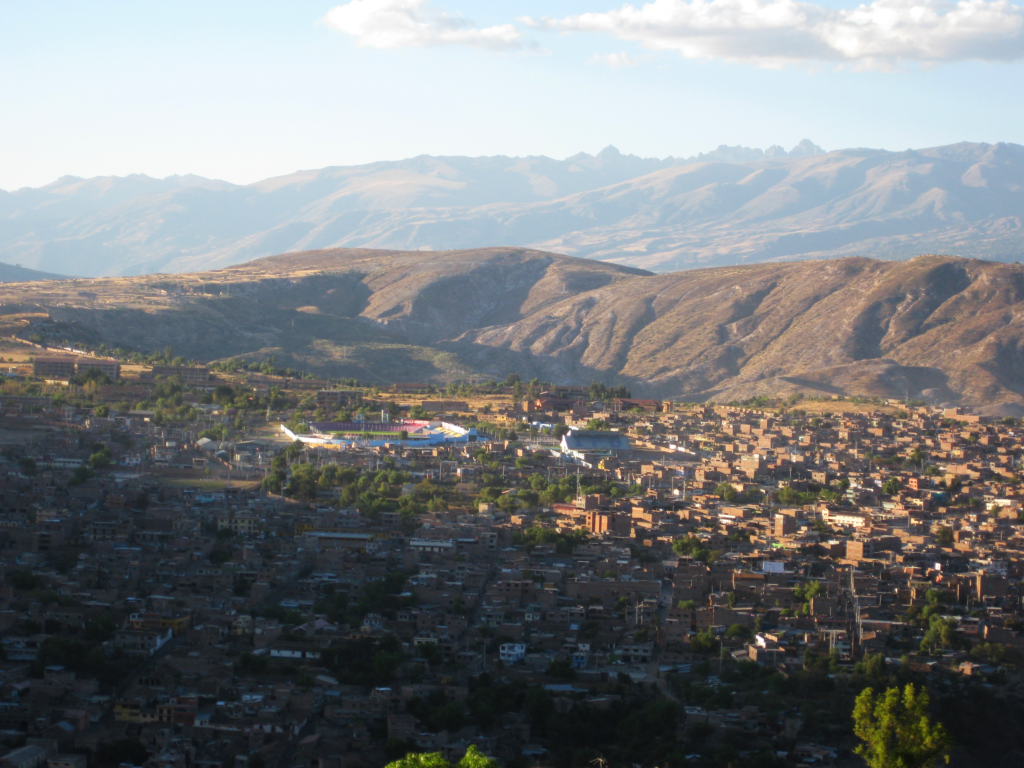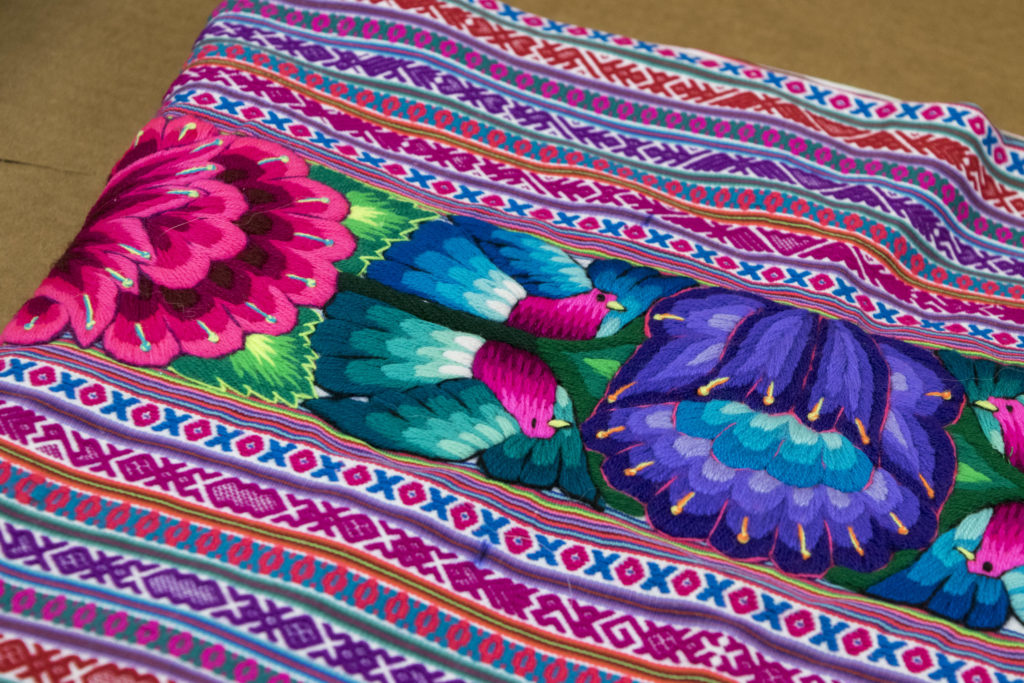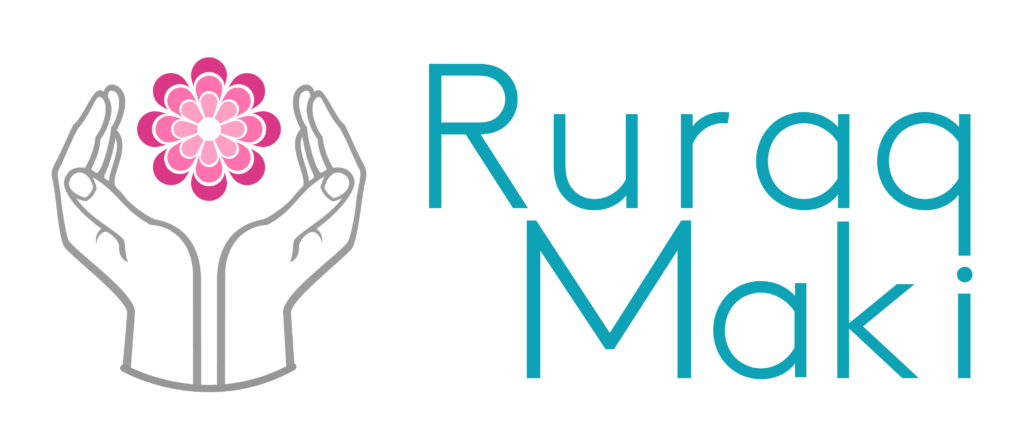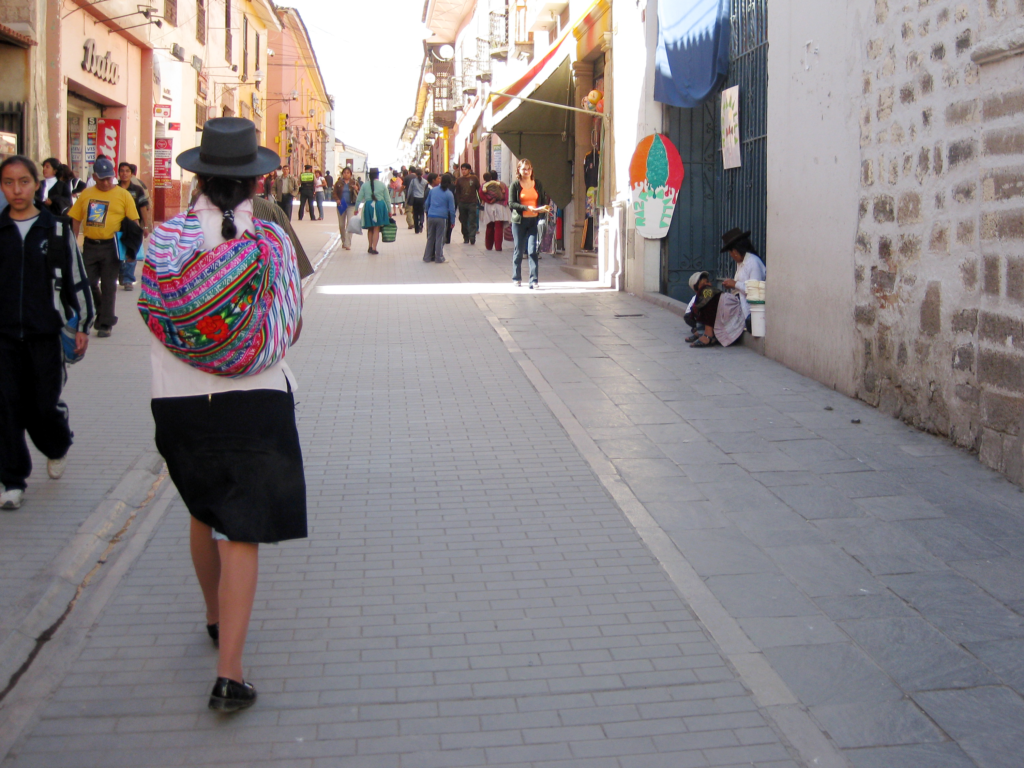A manta, also called aguayo (in Aymara) or q’ipirina (in Quechua) is a rectangular cloth used in traditional communities in the Andes region. Manta has been used for thousands of years by women as shawls, or to simply carry groceries and other goods, or even children on their backs. Not all mantas are created equal: The different colors and weaving patterns found in a manta are important in differentiating one community or ethnic group from a neighboring group.

Ruraq Maki works with artisans in the Ayacucho region in Peru. The basic form of a manta typically features colorful stripes and lines of woven figures that are symbolic of local animals and landscapes, called curros. The most intricate mantas can have up to 9 lines of curros, while other mantas have none. The simpler manta, without curros, cost less.
Manta comes in white (traditional), black, pure black, light blue, dark blue, grey, and brown. The Ayacuchan manta is unique in that it contains a large, embroidered stripe down that middle, which is hand embroidered with designs and motifs specific to the city of Ayacucho and the nearby community of Huanta. The Huantan embroidery style is finer and the price is therefore higher as compared to the Ayacucho embroidery style.

Our products are made exclusively by incarcerated men and women in the Yanamilla Prison in Peru. The men in the prison hand weave the manta using back strap looms and the women hand embroider the material.
For more details about how the manta is woven and embroidered, check out our next posts.

